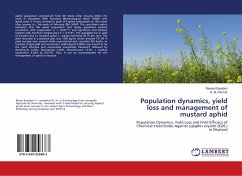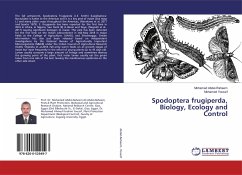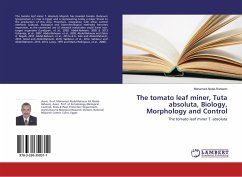
Red Cotton Bug: Biology, Population Dynamics, and Chemical Control
Exploring the Life Cycle, Population Trends, and Chemical Intervention for Effective Red Cotton Bug Management
Versandkostenfrei!
Versandfertig in 6-10 Tagen
29,99 €
inkl. MwSt.

PAYBACK Punkte
15 °P sammeln!
The investigation on the biology, population dynamics, and control measures of the red cotton bug, Dysdercus koenigii Fabricius, was conducted under both laboratory and field conditions. The study covered various aspects of the insect's life cycle, including egg characteristics, nymphal stages, and adult features. The incubation period, hatching percentage, and nymphal development were examined in detail. The research found that the red cotton bug exhibited a total nymphal period of approximately 35 to 41 days. The adult stage was characterized by distinctive features in males and females, wit...
The investigation on the biology, population dynamics, and control measures of the red cotton bug, Dysdercus koenigii Fabricius, was conducted under both laboratory and field conditions. The study covered various aspects of the insect's life cycle, including egg characteristics, nymphal stages, and adult features. The incubation period, hatching percentage, and nymphal development were examined in detail. The research found that the red cotton bug exhibited a total nymphal period of approximately 35 to 41 days. The adult stage was characterized by distinctive features in males and females, with females displaying a higher fecundity. The longevity of males was observed to be longer than that of females. The investigation also explored the insect's population fluctuation, noting its preference for Bt cotton over hybrid and Deshi varieties. Field experiments evaluated the bio-efficacy of different insecticides against the red cotton bug, with imidacloprid proving to be the most effective in reducing bug populations.












